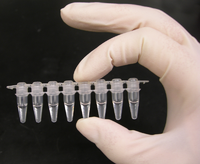
Photo from wikipedia
Background Patients that arrive in the emergency department (ED) with COVID-19-like syndromes testing negative at the first RT-PCR represent a clinical challenge because of the lack of evidence about their… Click to show full abstract
Background Patients that arrive in the emergency department (ED) with COVID-19-like syndromes testing negative at the first RT-PCR represent a clinical challenge because of the lack of evidence about their management available in the literature. Our first aim was to quantify the proportion of patients testing negative at the first RT-PCR performed in our Emergency Department (ED) that were confirmed as having COVID-19 at the end of hospitalization by clinical judgment or by any subsequent microbiological testing. Secondly, we wanted to identify which variables that were available in the first assessment (ED variables) would have been useful in predicting patients, who at the end of the hospital stay were confirmed as having COVID-19 (false-negative at the first RT-PCR). Methods We retrospectively collected data of 115 negative patients from2020, March 1st to 2020, May 15th. Three experts revised patients’ charts collecting information on the whole hospital stay and defining patients as COVID-19 or NOT-COVID-19. We compared ED variables in the two groups by univariate analysis and logistic regression. Results We classified 66 patients as COVID-19 and identified the other 49 as having a differential diagnosis (NOT-COVID), with a concordance between the three experts of 0.77 (95% confidence interval (95%CI) 0.66- 0.73). Only 15% of patients tested positive to a subsequent RT-PCR test, accounting for 25% of the clinically suspected. Having fever (odds ratio (OR) 3.32, (95%CI 0.97-12.31), p = 0.06), showing a typical pattern at the first lung ultrasound (OR 6.09, (95%CI 0.87-54.65), p = 0.08) or computed tomography scan (OR 4.18, (95%CI 1.11-17.86), p = 0.04) were associated with a higher probability of having COVID-19. Conclusions In patients admitted to ED with COVID-19 symptoms and negative RT-PCR a comprehensive clinical evaluation integrated with lung ultrasound and computed tomography could help to detect COVID-19 patients with a false negative RT-PCR result.
Journal Title: BMC Public Health
Year Published: 2022
Link to full text (if available)
Share on Social Media: Sign Up to like & get
recommendations!